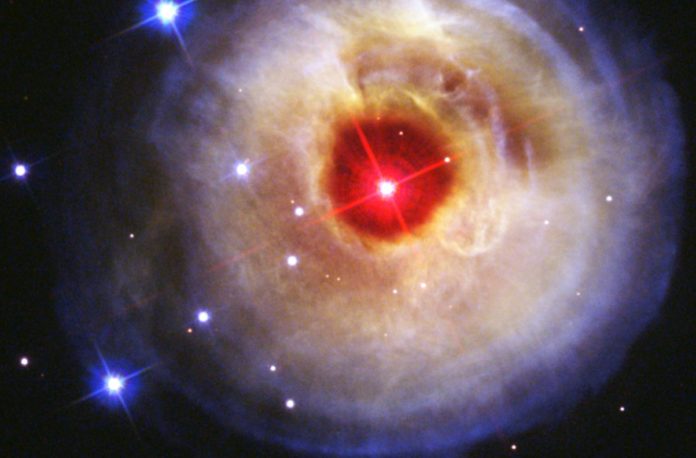In 2002, scientists witnessed the star V838 Monocerotis suddenly become extraordinarily bright. This was the beginning of an unbelievable experience that resembled a renowned artwork at times.
For many of us, a really dark night is something strange, or at least something unfamiliar. Street lamps, cars, neon signs have long driven darkness out of our surroundings. As overexposed city dwellers, we have forgotten or perhaps never even experienced what real nighttime darkness is. If you go to the country or to the mountains, you can experience what a deep, black night is. It might make you feel a little queasy at first, but it can also have its positive sides.
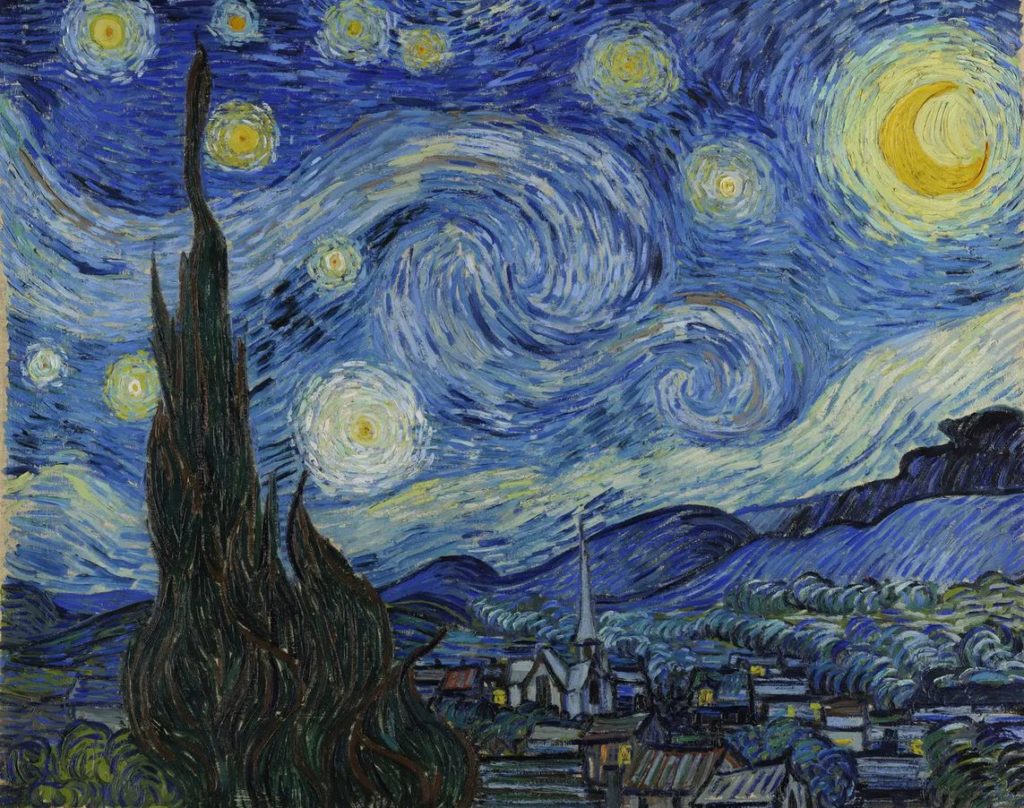
Van Gogh’s Starry Night
Vincent van Gogh felt something similar when he painted his famous picture “Starry Night” in the summer of 1889. His sky appears graceful, but also powerful and seems almost alive. The stars are great, dappled wisps of light, and whirls and waves entwine, giving the sky comforting security. In comparison, the landscape is bleak and the dark cypress tree in the foreground looks menacing.
At the time, Van Gogh was suffering from severe mental health problems and was living in a sanatorium. In a letter to his brother, he wrote about his irrepressible desire for religion, which he sometimes felt.
“I go outside in the night to paint the stars.”
Van Gogh himself was not very happy with his picture. Today it is considered one of the masterpieces of the 19th century and countless treatises have been written about it. His skyscape is mostly interpreted as a reflection of his mental state at the time. But you can also see a kind of vision of the night sky in it. She anticipates what could be there.
“The night often seems much livelier and more colorful to me than the day,” van Gogh once noted. And indeed, there are such Van Goghian creatures in the night sky. One of them is called V838 Monocerotis, V838 Mon for short.
Brighter than any other star
V838 Mon lies where the outermost spiral arm of our Milky Way loses itself in intergalactic space. The star is very far away, about 20,000 light-years, and therefore appears faint to us. Because of his unusual behavior, we even noticed him. Until recently, it was no more than an alone bluish star in our galaxy’s backyard. But in January 2002, astronomers observed a spectacle, unlike anything they had seen before.
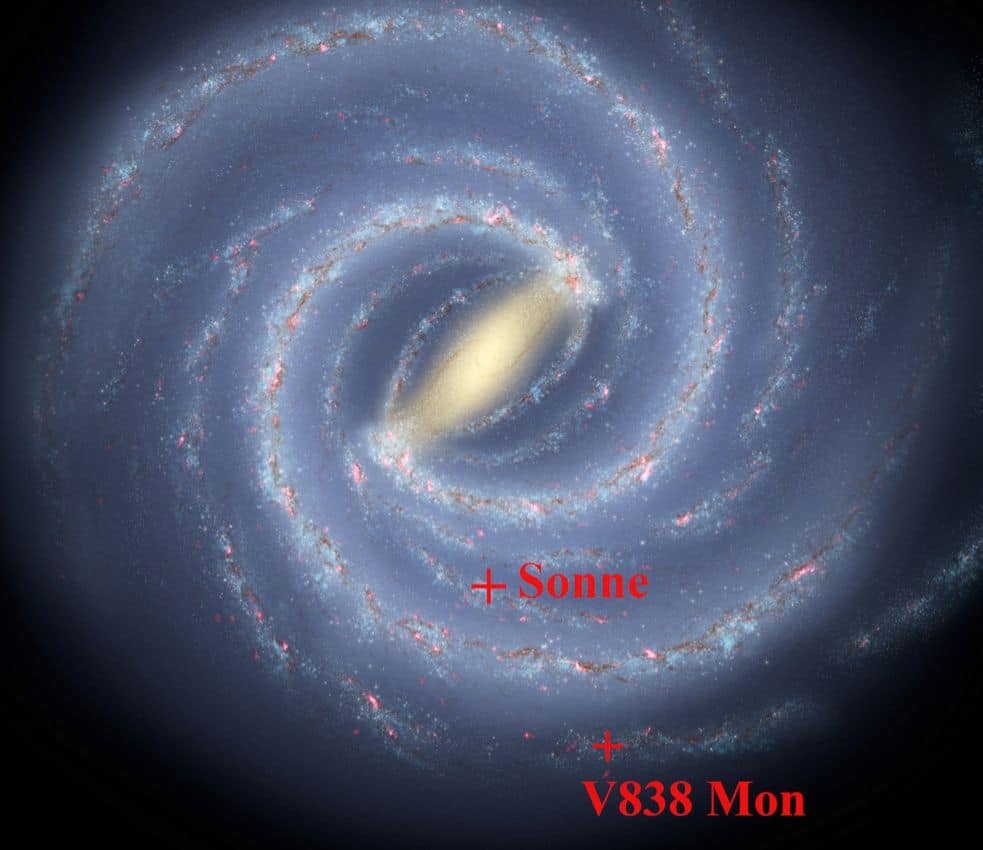
V838 Mon became brighter than any other star in the Milky Way within days. It maintained this brightness for two months, sending out tremendous amounts of light into surrounding space. Then it began to fade away quickly, then more slowly.
The astronomers were amazed. There have been stars that have exploded and become even brighter in the process, but such a course of light had never been seen before. How could a star get 10,000 times brighter for two months and then fade away again?
A star that wants to get brighter has only two options: it must either get hotter or get bigger. At V838 Mon, the eruption proceeded in two phases. First, his temperature rose, and at the same time, he grew rapidly. Shortly thereafter, it cooled down again, but at the same time, it continued to inflate to gigantic dimensions. If it had been in our solar system, it would have extended almost into the orbit of Uranus. So it would have been about 3000 times the size of our sun. A normal, compact star had become hypergiant, only to slowly shrink again a few months later.
Astronomers were not speechless for long. Various explanations have been proposed. It quickly became clear that a single star could not ignite such fireworks alone. At least one other star or at least one large planet must have been involved. The best fit was the model of a “stellar merger”. It describes what happens when a star crashes onto another star. In the V838-Mon system, therefore, there must have been two stars that came too close and merged into a single star. A large, falling planet could also be a trigger. Planet-eater or stellar cannibal, V838 Mon’s momentary but gargantuan expansion was nothing more than the bloating of one star as it digests another star or planet.
An extremely heated encounter
A fast-flying star has immense kinetic energy. One can imagine that it sets something when it encounters an obstacle such as another star. Stars do not have sharp surfaces. They are balls of gas whose shells get thinner and thinner towards the outside. When one star approaches another, these thin outer layers meet first.
In the case of V838, a small star, about a third as massive as the Sun, came flying in and struck a large star, about eight times as massive as the Sun. The small star penetrated the shell of the other star at supersonic speed, leaving a hot trail inside. While it was decelerated sharply, it spiraled lower and lower and got into increasingly dense gas. In the process, its outer layers were torn away, and finally, it was completely dissolved.
The whole crash lasted only a few weeks. The small star left so much energy in the surviving star that its envelope was extremely heated and therefore expanded enormously – up to the dimensions of a hypergiant.
V838 Mon was the first star to see an outburst of this type, but a few more have since followed. It has become the prototype of a new class of objects called “luminous red novae”.
A wandering light echo
After the unprecedented outburst, many telescopes were regularly trained on V838 Mon for possible new ones
to document developments. But the star hardly changed. Instead, a completely unexpected play of light began around him.
After a few months, where there had been only black skies before, a new, ghostly misty formation appeared. In the years that followed, the phenomenon spread and took on an increasingly irregular, whorled structure. It appeared as if matter from V838 Mon was spilling out into the surrounding space. But this impression was deceptive. Nothing moved here, nor did the misty structure itself glow.
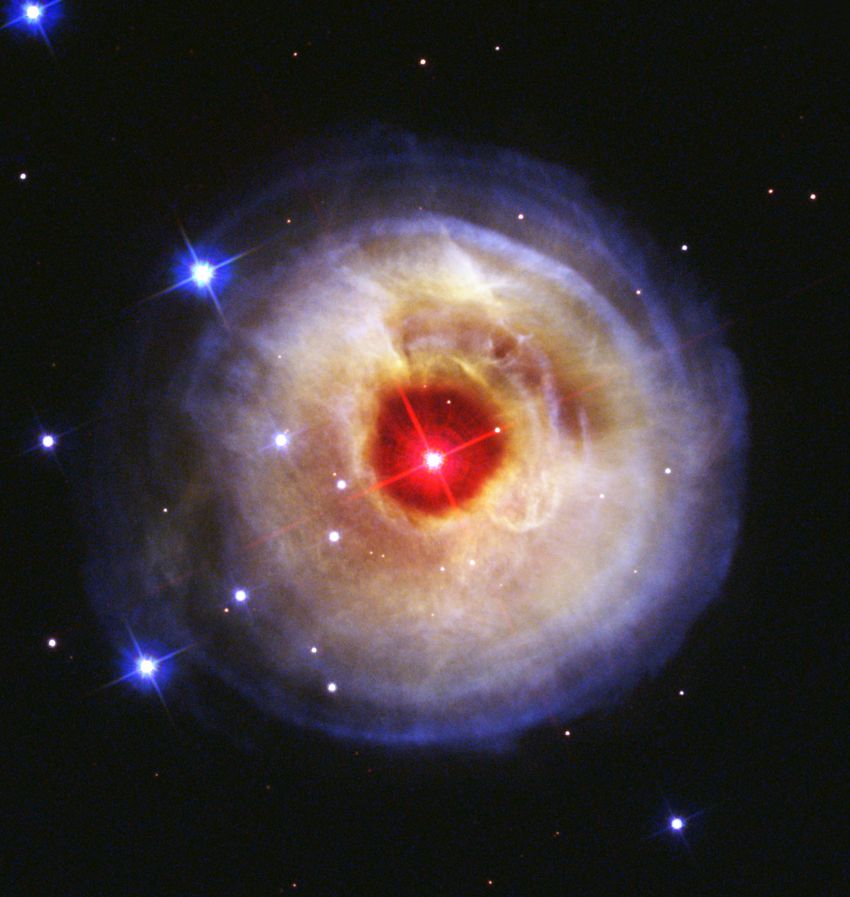
Rather, matter in space is illuminated by the light pulse emanating from V838 Mon, much as a flaming torch illuminates the walls of a cave. We see the hundred-day flash of light traveling outward through the interstellar environment of V838 Mon. It is a light echo. The interstellar dust directs the light of the pulse toward us, making it visible. A skyscape is brought out of the dark for a short time. It is brought out of the night, so to speak, into the day.
The light pulse moves further and further outwards and with it the light echo. It keeps illuminating other skyscapes, making them visible for some time. Then they sink back into darkness. The light pulse moves on, becomes weaker and finally fades away.
The similarity of the light echo with the Van Gogh light vortices in the picture of the starry night was obvious and was already noticed by the first observers. But there was not only an optical relationship. It was also their liveliness, reminiscent of van Gogh’s nocturnal creatures. The avalanche of light kept illuminating different scenes in the backyard of V838 Mon. It showed a moving sky just like van Gogh’s paintings of the night.
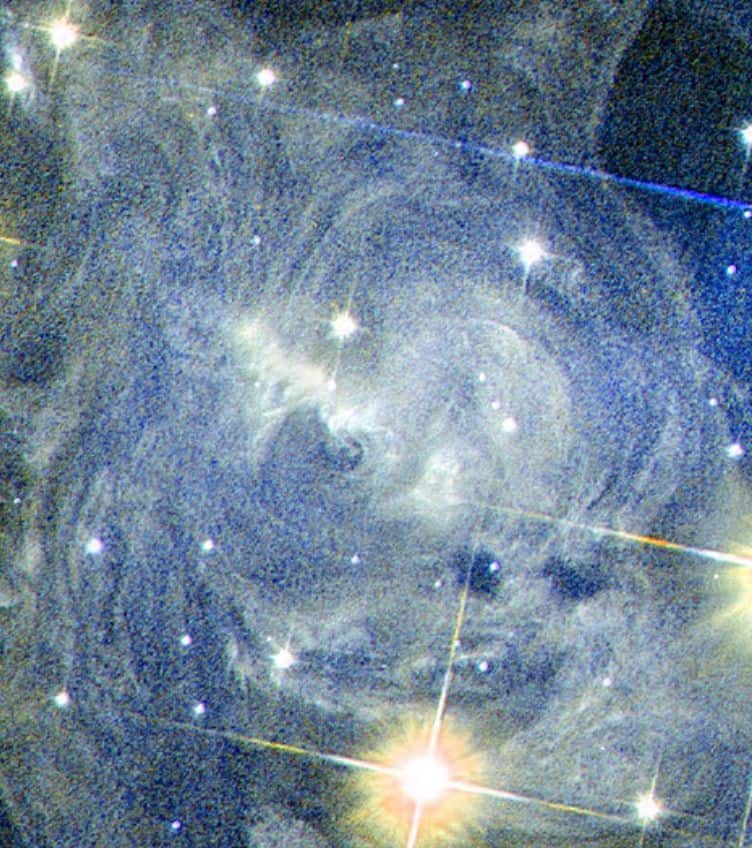
Van Gogh’s paintings and letters reveal his fascination with the stars. They were both an anchor and a place of longing for him. He died believing that one could travel to the stars through death. In one of his last letters he wrote: “Just as we take the train to go to Tarascon or Rouen, we take death to go to a star.”
So he saw death as a kind of transport for the journey to the stars, like a train that takes you from one place to another. If his wish came true, he might have taken the train to V838 Mon. He would certainly have liked the natural spectacle in which something hidden is brought to light – even if only for a short time.
Image Credit: Getty
You were reading: V838 Monocerotis: A Van Goghian creature comes to life
